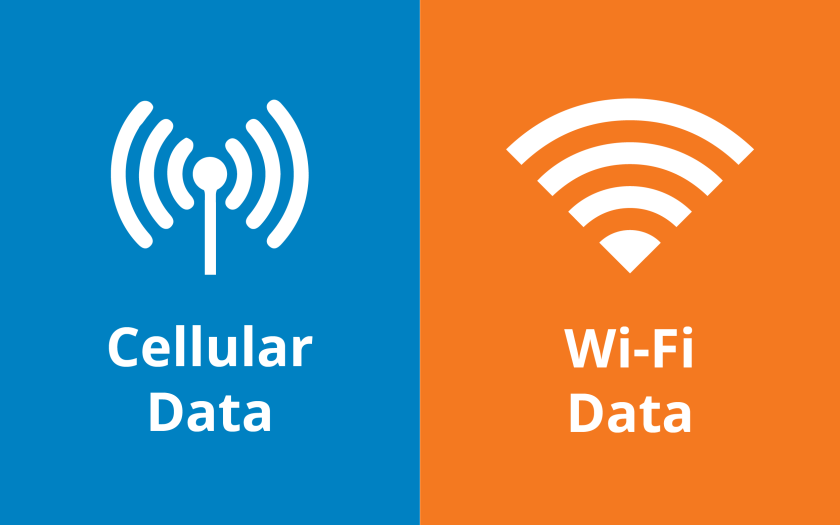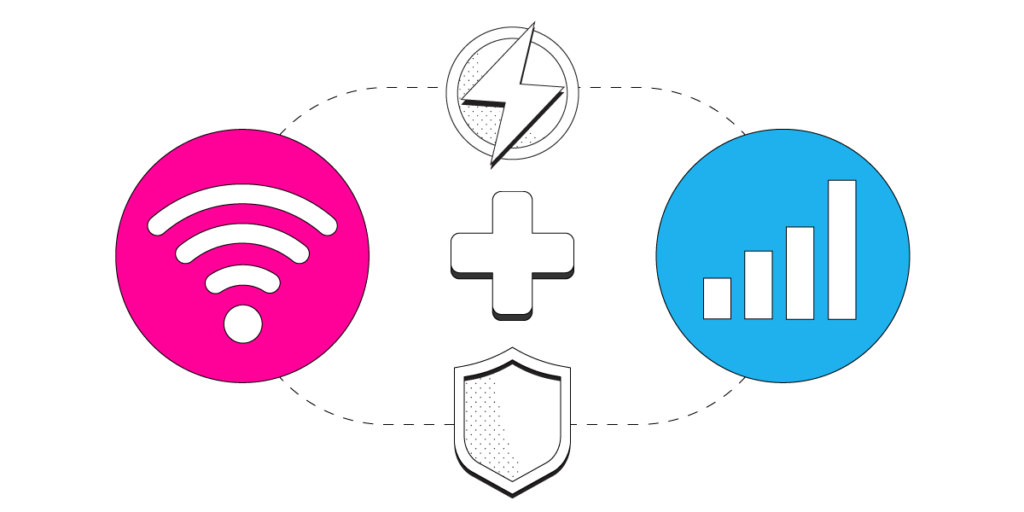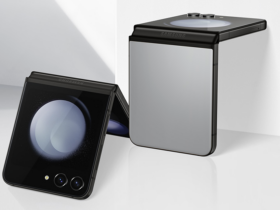The evolution of communication tools is undeniable. The technology of the day is reflected in the way we communicate. Smartphones allow us to maintain our constant global contact. These gadgets are indispensable for our internet research and social interaction. Smartphones rely on networks to connect to other devices and carry messages back and forth. These connections can now be wired or wireless. Both networks may be ideal for us depending on our own circumstances. Which is why we need to know: cellular or Wi-Fi?
Cellular Network
Cellular networks use radio waves, an air-based interface, and a link layer protocol to connect mobile devices to a base station. Then, the bases are linked together via a Mobile Switching Centre, creating a larger, potentially worldwide, coverage area. Accessing functions like phone calls, the internet, and other forms of communication is simplified while using a cellular network. However, these systems rely on carrier networks, which are owned and operated by private businesses.
However useful they may be, cellular networks are not without their drawbacks, such as limited coverage areas. They are limited to the service area of their carrier. Theoretically, a mobile phone can communicate with its network’s tower up to 45 miles away in any direction.
Therefore, a better cellular network can be expected from a provider with more towers. Over time, cellular networks have improved, allowing for faster and more reliable data transfers. At first, they could only send and receive data in KB increments. The networks were 2G, or second generation. The speeds were increased from a few MB/s to over 100 MB/s. Current cellular networks are 5G, or the fifth generation.

What is a Wi-Fi network
The IEEE 802.11 standards form the basis for the Wi-Fi wireless networking protocol suite. These protocols establish the rules for how devices in close proximity to one another can communicate with one another through wireless networks. In this context, the IEEE (Institute of Electrical and Electronics Engineers) serves as Wi-Fi’s governing body. Wireless Fidelity is the actual name for it.
Connected Wi-Fi devices form a wireless network. The network can connect to the World Wide Web. Therefore, the internet is accessible to all devices via which contact is desired. IEEE 802.11 standards form the basis for its operation. It specifies how the Wi-Fi system use a wide variety of radio and microwave frequencies for data transmission. Because of this, Wi-Fi is one of the fastest wireless networks available worldwide.
The Internet can only be accessed, in contrast to other networks, when a Wi-Fi connection is available. It has a restricted range, but as long as the device stays inside that range, the internet works great. Also, the internet can’t be accessed over a Wi-Fi network without routers or gateways.

When Should use a Cellular Network
Using a cellular network is warranted in some situations and contexts. Since using cellular networks is highly pricey, we should only do so when:
- There is no safe Wi-Fi network available to us.
- The available wireless internet is unreliable or slow.
- The strength of the Wi-Fi signals is poor.
- When we are in our home region of the cellular network, we are not travelling.
When you should use a Wi-Fi network
Similarly, there are times when using Wi-Fi just isn’t the best option. Although using Wi-Fi has become increasingly mainstream, users should still be wary when connecting to a public network. Wi-Fi networks do not have the same built-in security as cellular networks. Although Wi-Fi offers a lot of advantages over cellular networks, we need to weigh them carefully before implementing it.
For this reason, we should limit our Wi-Fi use to:
- We have full faith that it is safe.
- What we need is faster internet.
- The quality of the Wi-Fi signal has always been excellent.
- We are transferring really large files.
- We have a small data allowance.

Pros and Cons of a cellular network
Pros
Cellular networks have been a game-changer in communication technology. One of the biggest advantages of a cellular network is that it offers a wireless connection, which eliminates the need for wires. You no longer have to fumble around with cords and cables to get online. Another benefit is that you don’t need any additional hardware to connect to the network. That means you can get started quickly and easily. The coverage of cellular networks is massive, and you can remain connected even when you’re far from home or the office. This network is also known to offer better security measures than other forms of communication, so you can rest assured that your information is safe and secure. In short, cellular networks are a great way to stay connected without the headache of wires and extra hardware.
Cons
While cellular networks have become an essential part of our lives, there are a few cons to using them. One of the major drawbacks of a cellular network is that it is only available for mobile devices. You cannot use it for your desktop or laptop computers, which limits its functionality. Additionally, it can be very expensive to maintain a cellular network plan, especially if you want unlimited talk, text, and data. You also need to keep a close eye on how much data you are using, as exceeding your monthly limit can lead to hefty overage charges. Lastly, if you want to use a cellular network, you must have a dedicated data plan, which can add up and put a strain on your budget.
Pros and Cons of a Wi-Fi network
Pros
The benefits of having a Wi-Fi network in your home or office are numerous. Firstly, you can connect multiple devices at the same time to a single network, allowing for seamless internet access for everyone in the household or workplace. Secondly, the internet speed can be much faster when connected to a Wi-Fi network, especially if you have a good internet service provider. Additionally, having a Wi-Fi network is generally cheaper than setting up and paying for wired connections. Sharing large files over the internet is also easier with Wi-Fi, making it a convenient tool for both personal and professional use. Finally, it can create a viable LAN (local area network) with connected devices, meaning you can share files, printers and other resources between devices easily, making your workflow more efficient. Overall, having a Wi-Fi network is an excellent convenience that can improve productivity and connectivity in your daily life.
Cons
While Wi-Fi networks offer the convenience of mobility and accessibility, they come with a few drawbacks. One of the biggest issues is that a Wi-Fi network is hardware dependent, which means that the strength and speed of the connection is dependent on the quality of the hardware used. This can be an issue especially when one is in an area with multiple users all competing for bandwidth. Additionally, Wi-Fi networks have a limited range, which means that users must remain within a certain distance to stay connected to the network. Finally, there’s the security concern. Wi-Fi networks can be a significant security threat, and hackers can easily gain access to private information, infect computers with viruses or malware, and even launch cyber attacks. Therefore, it’s essential to take precautions to protect both your personal and business networks.









Leave a Reply